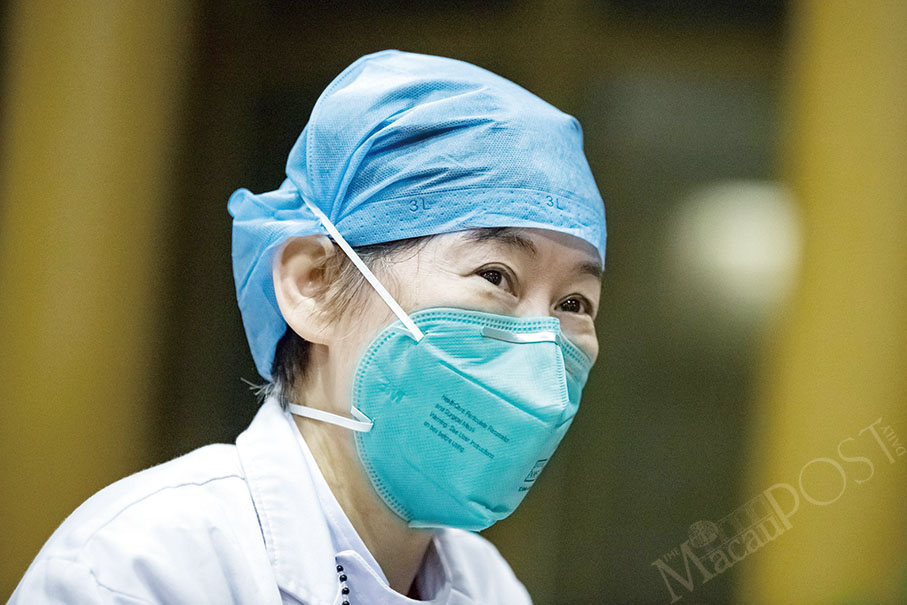Zhang Jixian, a Wuhan respiratory doctor, is hailed as the first doctor to alert the medical system of the novel coronavirus. She recalls how the novel coronavirus, an alien pathogen facing mankind, emerged from a seemingly ordinary case of an elderly couple in late December.
Interview by Yao Yuan, Ma Yujie, Zhou Jialu and Hou Wenkun
WUHAN – The devil is in the detail. In the case of Zhang Jixian, hailed as the first doctor to alert the medical system of the novel coronavirus, the devil that later snowballed into a raging epidemic was found in a CT scan.
Zhang, a veteran respiratory doctor in a Wuhan hospital, recalled how the novel coronavirus, an alien pathogen facing mankind, emerged from a seemingly ordinary case of an elderly couple in late December.
On December 26, an elderly couple from a nearby community visited the Hubei Provincial Hospital of Integrated Chinese and Western Medicine. Their symptoms included fever, coughing and tiredness, which “looked like flu or common pneumonia,” recalled Zhang, director of the hospital’s respiratory and critical care medicine department.
But when their CT scan images reached Zhang the next day, the 54-year-old doctor noticed features that were different from flu or common pneumonia.

Zhang Jixian, director of the respiratory and critical care medicine department of the Hubei Provincial Hospital of Integrated Chinese and Western Medicine, gives an interview at the hospital in Wuhan last month. – Xinhua
SPECIAL PATIENTS
Zhang’s experience during the 2003 SARS outbreak, when she worked as a medical expert investigating suspected patients in Wuhan, made her sensitive to signs of an epidemic. After reading the CT images of the elderly couple, she summoned their son, demanding a CT scan of him too.
“At first their son refused to be examined. He showed no symptoms or discomfort, and believed we were trying to cheat money out of him,” said Zhang.
It was Zhang’s insistence that brought her the second piece of evidence: the son’s lungs showed the same abnormities as those of his parents.
“It is unlikely that all three members of a family caught the same disease at the same time unless it is an infectious disease,” Zhang told Xinhua.
Also on December 27, the hospital received another patient who also developed symptoms of coughing and fever and showed the same lung images in the CT scan.
The blood tests of the four indicated viral infections. Zhang also prescribed them a series of influenza-related tests. All turned out negative.
That day, she filed a report to the hospital, which soon submitted it to the district-level center for disease control and prevention. “The report is about that we discovered a viral disease, probably infectious,” she said.
Back then, Zhang could not know it was among the first medical reports of an epidemic that has “spread the fastest, caused the most extensive infections and been the hardest to contain since the founding of the People’s Republic of China in 1949.”
Data from the World Health Organization show more than 123,000 people had died of COVID-19 globally as of April 15, more than 130 times the death toll of the SARS virus that belongs to the same coronavirus family.RAISING ALARMS
Back then, knowledge of the virus was scarce. After filing the report, Zhang cordoned off an area in the department’s ward to hospitalize the four patients. She then demanded medics in the ward to beef up self-protection.
The arrivals of another three patients with similar lung images in the next two days further alarmed the hospital, which on December 29 convened a panel of 10 experts to discuss the seven cases. Their conclusion that the situation was extraordinary, plus information of two similar cases in other hospitals, prompted the hospital to report directly to the municipal and provincial health authorities.
Upon receiving the report, the authorities on the same day ordered an epidemiological investigation. That evening, experts from Wuhan Jinyintan Hospital, a hospital designated to treat contagious diseases, visited Zhang’s hospital and fetched six of the seven patients.
That day, Zhang ordered all respiratory doctors and nurses to wear masks, a precaution believed to have helped achieve zero infection of the medics in the department between late December and January 30.
According to an official timeline released on April 6 on China’s response to COVID-19, the Wuhan Municipal Health Commission on December 30 sent out an urgent notification to medical institutions under its jurisdiction about an outbreak of pneumonia of unknown cause in the city.
The National Health Commission (NHC) dispatched a working group and an expert team in the wee hours of December 31 to Wuhan to guide epidemic response and conduct on-site investigations.
Also on the same day, the Wuhan Municipal Health Commission released its first briefing about the outbreak of pneumonia of unknown cause on its website, in which it confirmed 27 cases and told the public not to go to enclosed public places or gather. The public was also advised to wear facemasks when going out.
In February, the Hubei provincial human resources and social security department and the provincial health commission awarded Zhang for her exemplary service, hailing her as “the first to report the epidemic in the province” and recognizing her leadership and arduous work in the hospital’s fight against COVID-19.
The doctor, however, tried to play down the honor.
“I was just doing what a doctor was supposed to do, driven by professionalism,” she said.
– Xinhua






